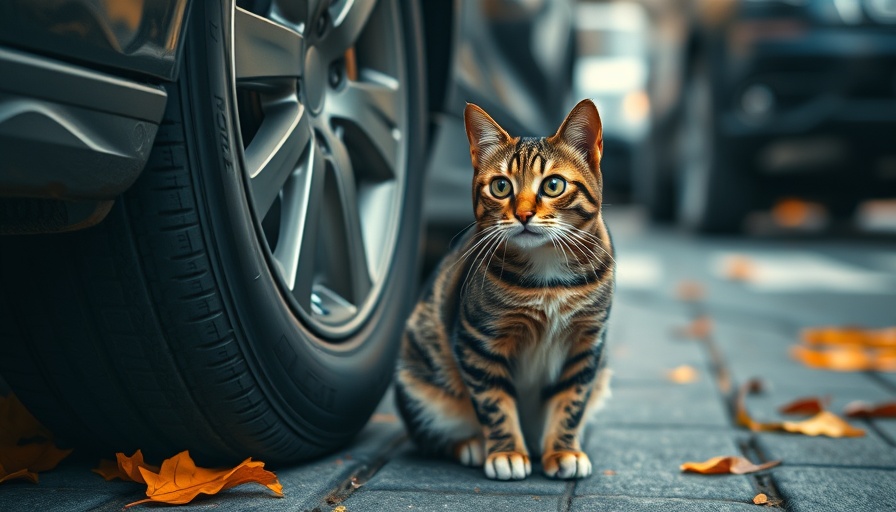
Understanding Liver Health in Dogs: Why Nutrition Matters
When a beloved furry friend is diagnosed with liver disease, feelings of uncertainty and concern often fill the hearts of caregivers. One vital way to support dogs facing this challenge is through proper nutrition. The liver plays a crucial role in a dog's well-being by assisting with digestion, detoxifying harmful substances, and regulating blood sugar levels. Hence, understanding what to feed a dog with liver problems can not only slow the progression of the disease but also enhance their quality of life.
Essential Dietary Components for Liver Disease
Dogs suffering from liver problems have unique dietary needs that must be catered to for optimal health. Consulting a veterinarian is paramount as they can tailor recommendations based on the specifics of the dog's condition. Here are key dietary considerations:
- Protein Management: Not all proteins are created equal for dogs with liver issues. While some may require reduced protein intake to manage symptoms like hepatic encephalopathy, others might thrive on increased levels of high-quality proteins. In these cases, proteins from eggs, dairy, and plant sources are more beneficial than red meat, which can exacerbate liver conditions.
- Caloric Intake: Maintaining energy levels through adequate caloric consumption is vital. A balanced mix of carbohydrates, fats, and proteins will help keep dogs from losing weight due to their illness.
- Sodium Reduction: Lower sodium levels can significantly aid in managing fluid retention caused by compromised liver function. Special liver diets typically recommend low-salt formulations.
- Enhanced Antioxidant Support: Adding antioxidants like vitamin E and selenium to the diet can protect liver cells from damage and promote healing.
- Control of Copper Levels: High copper intake is detrimental to liver health. Dietary regulations focusing on low copper and higher zinc can be beneficial in managing liver disease.
Commercial Diets vs. Custom Meals
In more severe instances of liver disease, veterinary-prescribed hepatic dog foods can be a game changer. These formulations are meticulously designed to meet the specific nutritional needs of compromised dogs. However, for milder cases, many pet parents can effectively manage their dog’s liver health with over-the-counter choices.
Choosing a prescribed diet isn't simply about picking a brand; it’s essential to have conversations with your veterinarian to determine the most beneficial food options based on the type and severity of your dog’s liver condition. This personalized approach can help ensure that you're feeding them the right nutrients that support liver health while keeping them happy and energetic.
Incorporating Fresh and Wholesome Ingredients
Beyond commercial diets, many pet owners opt for home-cooked meals tailored to their dog’s liver condition. Ingredients such as boiled chicken, rice, carrots, and pumpkin can provide nutritional benefits without causing harm. It’s important, however, to follow guidelines set by veterinary professionals to avoid unintentional dietary pitfalls.
Additionally, before embarking on home cooking, carefully prescreen which ingredients are beneficial for your dog’s individual case. Taking this path often fosters exciting food exploration and encourages bonding during meal preparation.
Real Stories of Transformation
Let’s consider the story of Max, a golden retriever diagnosed with moderate liver disease. He struggled with weight loss and lethargy. His owner diligently worked with their veterinarian to create a tailored diet regime. Incorporating more egg protein and cutting back on salt allowed Max to regain his energy. His radiant spirit returned, and he became a joy to be around again, illustrating the profound impact of dietary changes!
The Emotional Connection
Feeding a dog with liver problems is more than a thoughtful act; it's a demonstration of love and commitment to their health. Dogs thrive on our attention. When we take the time to learn about their specific needs, our bond strengthens. The happiness and well-being of our pets reflect the effort we put into caring for them.
Take Action for Your Pet's Health!
If your furry friend is facing liver issues, do not hesitate to reach out to a veterinarian. Their guidance will be invaluable in steering you towards the right dietary path for your dog's unique situation. Together, you can ensure that they receive the proper nutrition they need to enhance their life quality and well-being.
 Add Row
Add Row  Add
Add 


Write A Comment